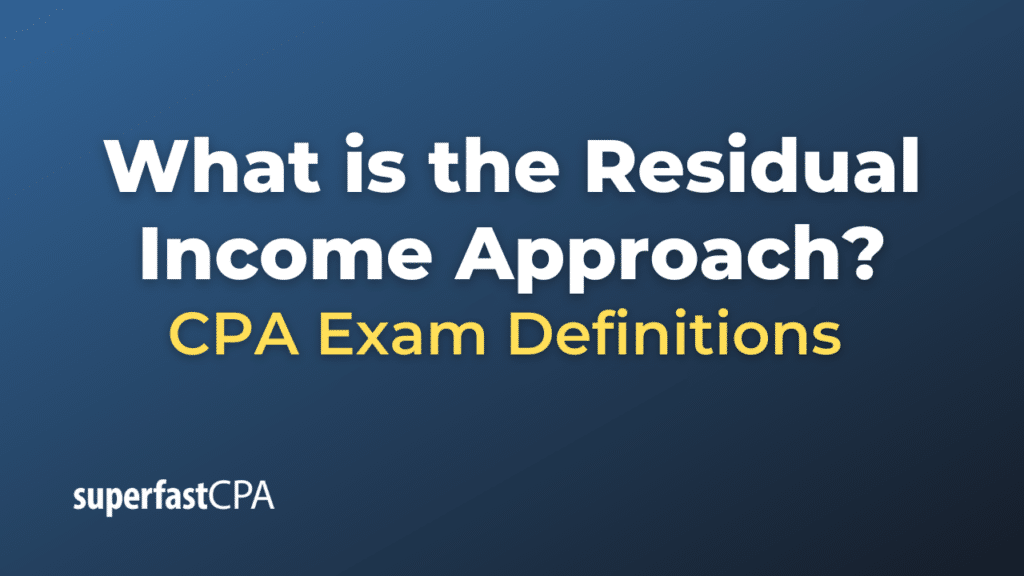Residual Income Approach
The Residual Income Approach, commonly associated with business and finance, is a method used to evaluate the value of a company or the performance of an investment. The fundamental idea behind this approach is to determine the income generated by an investment after accounting for the minimum required return on equity capital employed in that investment. In essence, it measures the excess return over what investors expect given the risk associated with the investment.
Here’s a breakdown of the approach:
- Calculation of Residual Income (RI):
RI= Net Income − (Equity Capital × Cost of Equity)
Where:- Net Income is the profit after taxes.
- Equity Capital is the shareholders’ equity.
- Cost of Equity is the required rate of return on equity.
- Valuation : The value of the equity is then calculated as the sum of the book value of equity and the present value of expected future residual incomes. If you’re determining the value of a company using the residual income approach, you’d project the residual income for future years and then discount those amounts back to the present using a discount rate (often the company’s cost of equity).
- Interpretation:
- A positive residual income indicates that the company is generating a return above the required rate of return on its equity capital, suggesting it’s adding value for shareholders.
- A negative residual income indicates the company is not covering its required rate of return, which might be a warning sign for investors.
- Applications:
- Performance Evaluation: Managers and divisions within larger corporations can be evaluated based on the residual income they produce. This provides a dollar amount indicator of how much value they’ve added to the company beyond the capital invested in their division.
- Investment Decisions: Investors can use the residual income approach to assess the intrinsic value of a company and compare it to its market price.
One advantage of the residual income approach over other valuation methods is that it considers both book value and the capacity of a firm to generate income above a required rate. However, like all valuation methods, its accuracy is dependent on the assumptions and projections used.
Example of the Residual Income Approach
Let’s walk through a simplified example of the Residual Income Approach:
Suppose we have a company named TechCorp. The information available for TechCorp is as follows:
- Book Value of Equity at the start of the year: $1,000,000
- Net Income for the year: $150,000
- Cost of Equity (required rate of return): 10%
Step 1: Calculate the Expected Return based on Equity.
Expected Return = Equity Capital × Cost of Equity
Expected Return = $1,000,000 x 0.10 = $100,000
Step 2: Calculate Residual Income (RI).
RI = Net Income − Expected Return
RI = $150,000 – $100,000 = $50,000
TechCorp’s Residual Income for the year is $50,000. This means that after covering the expected return on equity (i.e., the 10% required return on the $1,000,000 equity), TechCorp generated an additional $50,000 in income.
For valuation purposes, if we expect TechCorp to generate this same Residual Income indefinitely, we can determine the value added by the RI using a perpetuity formula:
Value of RI = RI / Cost of Equity
Value of RI = $50,000 / 0.10 = $500,000
The intrinsic value of TechCorp’s equity, then, is the sum of its book value and the value of its expected future residual incomes: Intrinsic Value = Book Value of Equity + Value of RI
Intrinsic Value = $1,000,000 + $500,000 = $1,500,000
So, based on the Residual Income Approach, TechCorp has an intrinsic equity value of $1,500,000.
Note: This is a simplified example. In reality, companies might not have constant Residual Income, and projections would have to account for changing values over time. One would also discount future Residual Incomes to account for the time value of money.













